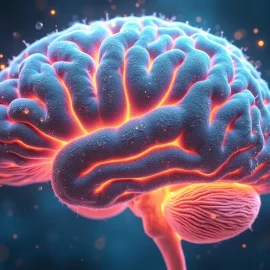

This article is an excerpt from the Shortform book guide to "The Master and His Emissary" by Iain McGilchrist. Shortform has the world's best summaries and analyses of books you should be reading.
Like this article? Sign up for a free trial here.
How are the left brain and right brain different in the way they perceive objects? Do we need the function of each hemisphere to fully see something?
Psychiatrist Iain McGilchrist seeks to dispel the myth of left-hemisphere superiority by showing that the right hemisphere is responsible for several of the brain’s most essential functions. To this end, he examines the different ways that each brain hemisphere perceives objects.
Keep reading for an intriguing exploration of visual perception in the brain.
Abstract vs. Contextual Perception
In The Master and His Emissary, McGilchrist explains that, though the left hemisphere grasps formal linguistic rules, only the right hemisphere grasps the implicit meaning that language conveys. The right hemisphere’s ability to understand meaning in context hints at another difference between the hemispheres in relation to visual perception in the brain: Only the right hemisphere perceives objects in context. Specifically, McGilchrist argues that the right hemisphere sees objects within broader surroundings, while the left hemisphere sees objects abstracted from those surroundings.
For example, McGilchrist cites a case in which a patient with left-hemisphere damage was asked to recreate a wooden model that was in front of him; the patient could only recreate it on top of the model standing before him. According to McGilchrist, this suggests the patient couldn’t create a mental abstraction of the model that he could copy—rather, he had to focus on the physical model in front of him.
(Shortform note: According to experts, the extent to which we perceive objects in context is culturally dependent. Indeed, one influential study found that Japanese people were better able to incorporate contextual information when perceiving an object, while Americans were better able to ignore context and focus on a particular object. However, this difference nearly disappeared when these individuals spent time in the other country: Japanese people who lived in the US grew more capable of ignoring context, whereas Americans who lived in Japan grew more capable of perceiving context.)
Individual Objects vs. Categorizations
Because the right hemisphere prefers to examine objects in context, while the left hemisphere prefers abstractions of concrete objects, a related difference arises: The right hemisphere thinks in terms of individual objects, while the left hemisphere thinks in terms of broader categories.
To demonstrate this difference, McGilchrist cites studies showing that, when asked to sort particular objects into various categories, subjects were more efficient when the object was in the right half of their field of vision—in other words, when it was presented to their left hemisphere (because the left hemisphere controls the right side of the body). Meanwhile, other studies show that the right hemisphere is better at distinguishing between individual faces and locations, as it prefers individuals over categories.
(Shortform note: According to scientists, there’s evidence suggesting that our brain’s capacity for categorization is innate rather than something we learn through exposure to visual stimuli. For example, we have the capacity for sorting animals into different categories (dogs, cats, etc.) even if we’ve never actually seen those animals. However, this capacity for categorization can have downsides, as experts have found that our tendency toward racial categorization can lead to increased implicit bias, even among children.)

———End of Preview———
Like what you just read? Read the rest of the world's best book summary and analysis of Iain McGilchrist's "The Master and His Emissary" at Shortform.
Here's what you'll find in our full The Master and His Emissary summary:
- How pop psychology has given us the wrong impressions of the brain's hemispheres
- Why the right hemisphere is actually more important than the left
- What would happen if left-hemisphere thinking took over the world






